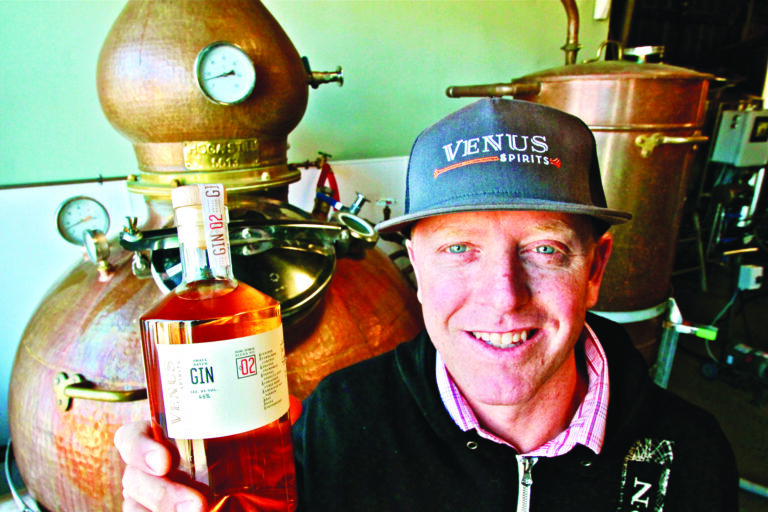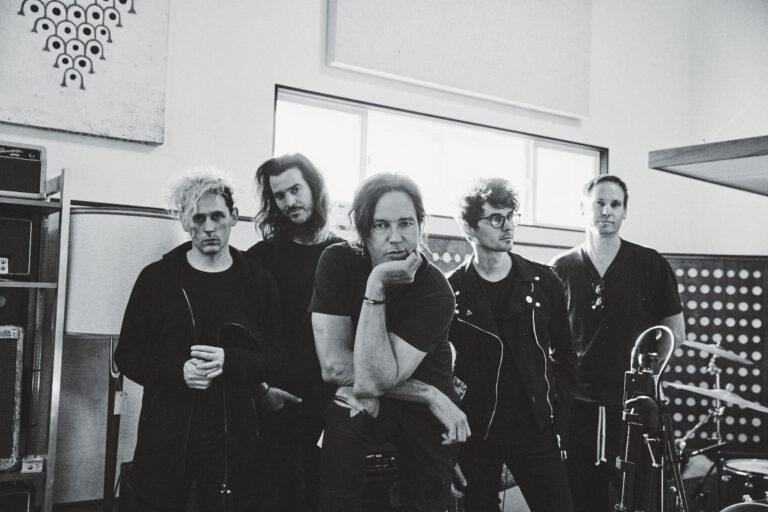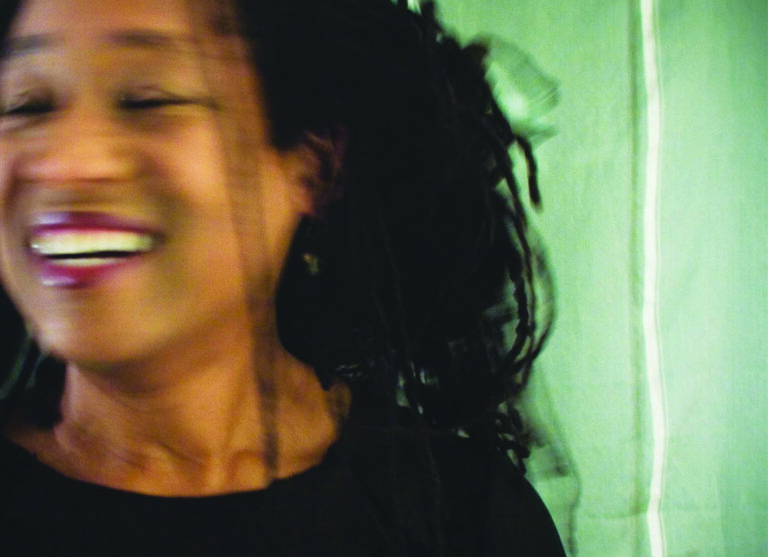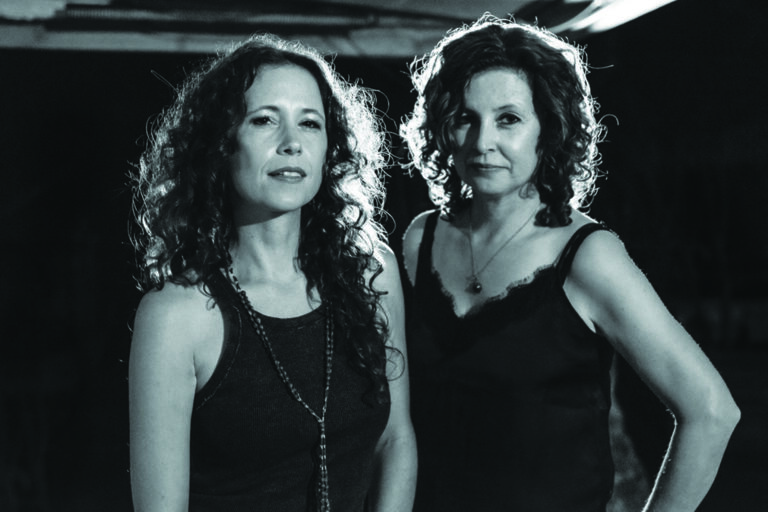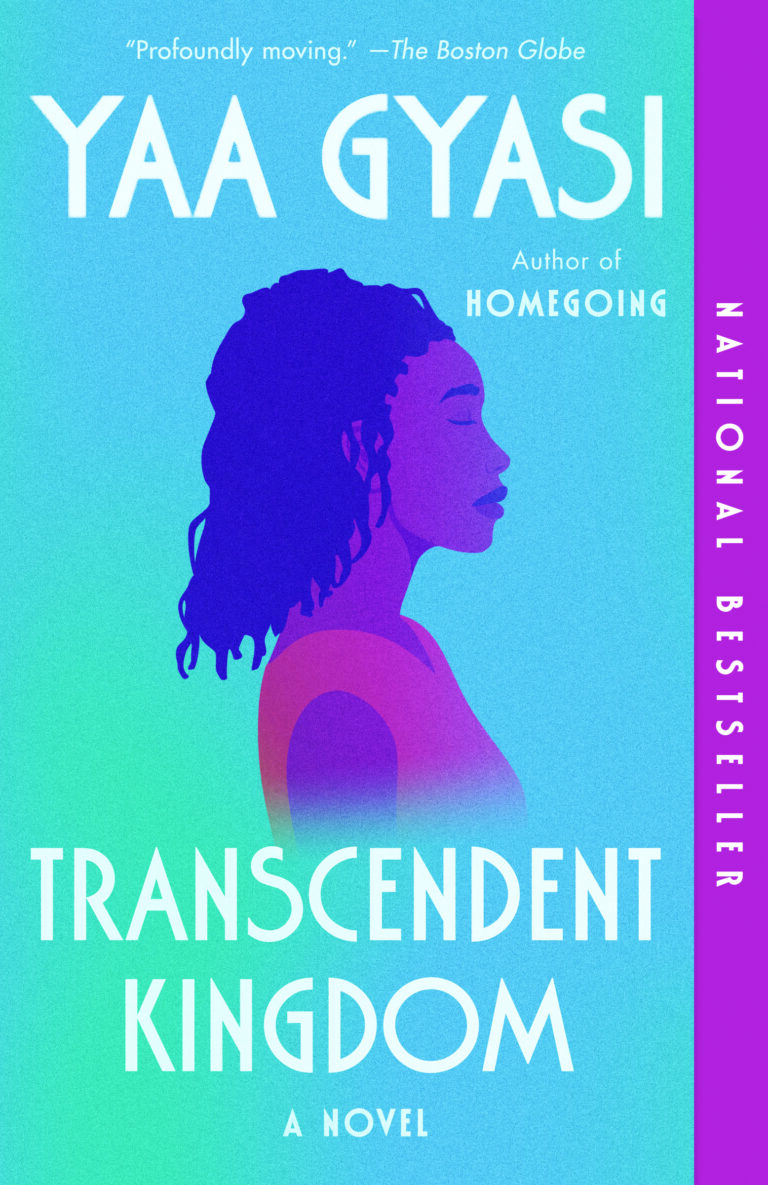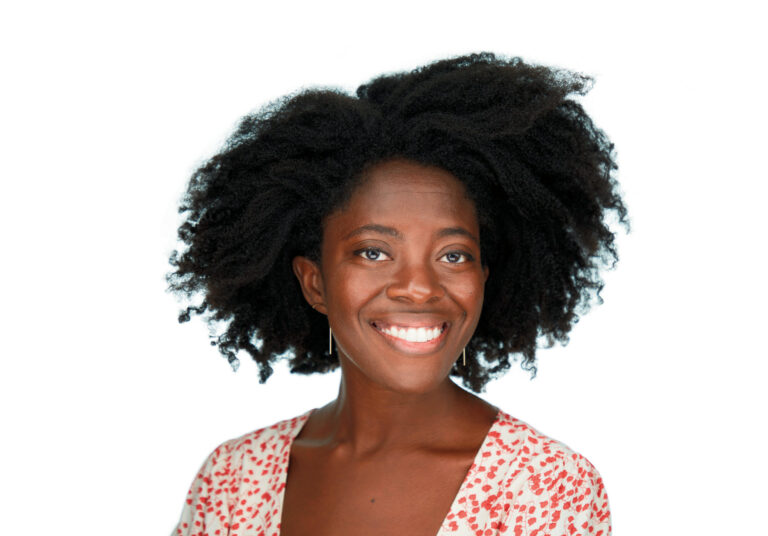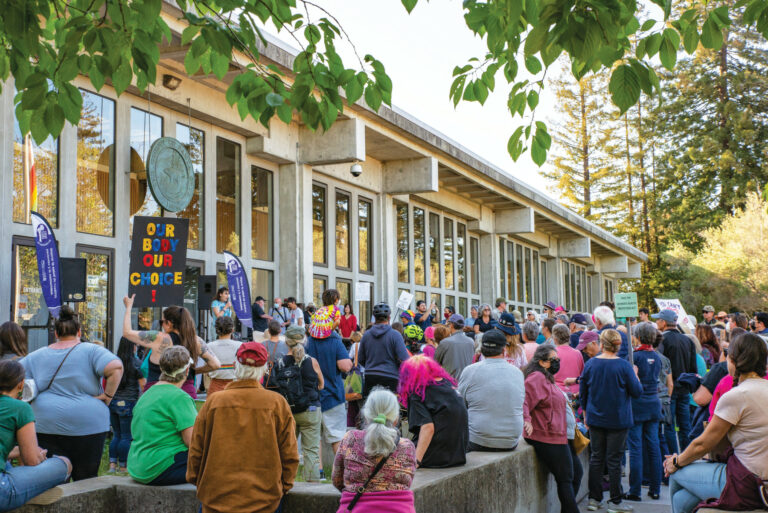After Yaa Gyasi’s first novel, Homegoing—a sprawling piece of historical fiction that traced a Ghanaian family line across generations—won a number of top awards, the book world might have expected a similarly epic story for her follow-up. Instead, the acclaimed young author—she was 26 when Homegoing was published in 2016—did something completely different, focusing her second novel, Transcendent Kingdom, on the intimate portrait of a young neuroscientist named Gifty who, while earning her PhD at Stanford, is forced by circumstance to take in her Ghanaian-American mother, with whom she has a complicated history.
While smaller in scale than Homegoing, Transcendent Kingdom is remarkably complex and ambitious, as Gifty confronts issues of mental health and addiction that have torn apart her family, and grapples with the seemingly competing roles of religion and science in her life.
The skillfulness and authenticity with which Gyasi waves these themes together is no doubt a big part of why Transcendent Kingdom was chosen for UCSC’s 2022 Deep Read, an event that draws hundreds of community members together to read the book. She will speak at the UCSC Quarry on May 15, in the finale of the event.
Gyasi—who, like her most recent main character, is of Ghanaian descent (although, unlike Gifty, she was born in Ghana and brought to the U.S. by her family as an infant in 1991) and also a graduate of Stanford, although in a very different discipline—spoke to me by phone from her home in Berkeley about those similarities, the book’s themes, and its arrival in September of 2020, during the pandemic.
‘Transcendent Kingdom’ starts out with this very intimate and powerful consideration of ‘What does crazy look like?’ And then through these characters, over the course of the book, there’s a pretty deep examination of how we view mental illness. You couldn’t have known when you were writing it that it would come out at such a pivotal time to talk about mental health, in the midst of the pandemic. But did you feel like it arrived at an opportune moment to be part of a larger discussion of those issues?
YAA GYASI: I think when the book came out, we were still in such a state of frenzy and confusion about what was going on, and how long everything would take. I suppose I could have guessed that there would be an upcoming mental health crisis, but I think I was already so kind of taken with the chaos of the moment that I wasn’t thinking about this book being prescient in any way.
As we—just barely—start to understand the mental and emotional toll the pandemic is taking on both children and adults, do you think the discourse around mental illness is changing in a positive way at all?
I hope so. It’s hard to know. I mean, I feel like people are kind of taking into consideration what this moment is doing to young people in a way that I think is really important. But I don’t know if I have noticed anything that feels like a substantive change in the conversation around mental health.
At one point in the book, Gifty’s mother flat-out says “I don’t believe in mental illness”—kind of the ultimate extreme of our societal unwillingness to give these issues the attention they deserve. Is that an attitude that you have personally encountered? Where did that come from?
It is an attitude that I see, although not spoken as explicitly as Gifty’s mother does there. But I grew up in the church, too, and I think there was—especially when I was younger, and again, I hope that this is changing—the idea that any problem that you had could be given to God, and therefore was not a problem. It kind of erased any discussion of why you might be feeling the way that you are feeling with regards to mental illness or mental health.
That push and pull of religion versus science comes up again and again in the novel. For Gifty, as a child, her relationship with God is a vehicle for expression and hope, but for adults, especially her mother, it becomes almost an escape. Maybe a necessary one, as you said, but sometimes it ends up seeming empty and even a bit scary, as when the pastor has no real comfort for the mother, or Gifty goes to the service where they’re railing against demons. And yet, Gifty stands up for her mother’s beliefs, and comes to an interesting place herself in regards to the church. So I guess my question is: Do you think religion in these characters’ lives is ultimately a force for good?
That’s an interesting question. I mean, I think for the mother, it was a force for some kind of good—more in the sense that it was such a source of comfort, and one of the few places from which she was willing to take comfort, and that felt pretty pivotal to me. Gifty is certainly skeptical of belief and skeptical of religion, more generally. But I think she recognizes that the thing that her mother needs—or rather, the thing that her mother will accept in this moment of deep darkness—is the comfort of God. And I think in that way, religion does some amount of good. It’s a place where these two women can meet.
I felt like when she eventually admits that science can fail, it just didn’t seem as devastating as when she’s remembering how her faith let her down when she was a kid. She’s more like, ‘Hmm, I guess science doesn’t always work.’ No big deal!
That’s funny. I mean, I suppose at that point in her life, so many things have failed her that perhaps she’s not able to pin all of her hope on anything.
Ah, maybe that’s it. Now, in the book, Gifty is studying neuroscience at Stanford; you graduated with a Bachelor of Arts at Stanford. What parts of your experience there did you bring to it?
Definitely that sense of “What am I doing here, being a person from the South at this school?” It had very few—certainly very few people from Alabama, but very few Southerners in general. I definitely felt, as Gifty does in her first year there, just kind of like a fish out of water. That aspect of things. And then I think also some of the observations that Gifty makes about, like, the vastness of California are ones that struck me as well when I first arrived there.
I guess the larger question is: How much of you is there in Gifty?
That’s definitely a harder question to answer. We have a lot of biographical similarities in terms of place, specifically—Ghanaian, grew up in Alabama, end up at Stanford. So there’s that. And I think the other major thing is, as I mentioned before, I grew up in the church. And I came to a very different place than Gifty does in my own understanding of religion, but I think this book was one of the ways that I thought through that, probably for the first time since I left the church in my teen years.
As a UCSC Creative Writing grad myself, I’ve always been really intimidated to write about scientist characters. Were you?
I was, in part because I had not taken a science class in, you know, decades at that point. But I was emboldened, in great part, because my best friend is a neuroscientist. She went to Princeton for her undergrad, but she was getting a PhD at Stanford when I started working on this. And so I was able to pick her brain, shadow her in her lab, have her read a draft of this. So I felt pretty confident that I wouldn’t be doing a huge disservice to the character.
You wrote a short story several years ago, ‘Inscape,’ that had most of these main characters, but in different contexts; Gifty was an English professor, not a scientist, for instance. Why did you want to rework the characters and develop it into a novel?
I really liked the voice of that story. I wrote that story after I finished a first draft of Homegoing, and I think partly I was into it because it just felt so different from what I’d been working on for years with my first novel. The voice was really fresh, and I loved the situation of this woman having to take care of her mother in her older age, which is something I don’t see written about a lot. I used to work with seniors when I was in high school, so I think a lot about taking care of old people. That felt really interesting to me. But I think the main thing was wanting to pair that situation with this work that my friend does. That’s where the book began for me, this feeling like maybe I could use that situation of a woman taking care of her mother, but just kind of situate her in a different field.
That situation of her caring for her mother is complicated by the fact that her mother is increasingly unrecognizable to her. That’s another theme you couldn’t have predicted would be especially resonant when ‘Transcendent Kingdom’ came out in 2020—in an era of lockdowns and isolation and extreme political division, the idea of family members seeming like strangers just seems to hit a little harder.
Yeah, I think a lot of us are confronted with a version of our family members that we perhaps never really saw. There are people, I’m sure, all over the world who realized that they had conspiracy-theorist family members for the first time, or anti-vaxxer family members for the first time. Definitely it’s a moment of these kind of reconfigurations, of what you knew about the people that you thought you were pretty close to.
One of the resentments Gifty harbors about her mother is that her mother was not willing to admit to even the existence of racism. I thought that was such an interesting idea, because we usually think of “admitting to racism” as something that is done or not done by racists, not by the victims of racism. How do you think it affects Gifty that her mother won’t acknowledge this part of their shared experience?
I think it’s deeply formative for both Gifty and [her brother] Nana that their mother lacks a kind of awareness around the racism that they’re experiencing, both in their town and also in their church. And I think, had they had a mother who was more willing or able to address the moments of microaggression that she saw in the church, maybe they would have left the church. Maybe they would have gone to a Black church. Maybe they would have had a foundation of being able to discuss what’s good about Blackness. I think of Gifty as a character who’s dealing with a lot of internalized racism, and I think that has plenty to do with their mother not really acknowledging what was happening to them.
Another realization that Gifty has to come to on her own is the attitude of American exceptionalism, and how it pervades so much of life in the U.S. The example that really got me was the idea that even American poverty could be somehow different—and better—than poverty in Ghana. Gifty says it was years before she came to understand how ridiculous that was. Did you have your own moment of realization about that?
I don’t know if I had one as crystallized as Gifty does there. But I did, like her, grow up with those commercials and flyers, and all of that—you know, like, feed a child in Africa for 50 cents a day, the price of a cup of coffee a day. But, in part because I grew up in the South, in an area that had a pretty significant population of people who were struggling financially, I think I noticed pretty quickly that poverty wasn’t exclusive to Africans.
The contrasts between Ghana and the U.S., and the various characters’ attitudes about them, are such an important part of the book. And Gifty’s mother and father are sort of two different sides of the American immigrant experience. Her mother says “America is difficult, but what would I go back for, my life is here,” but her father can never really give up on what’s been left behind.
Oh, yeah, definitely. I mean, I think we read a lot about the version of the American Dream that says, “It might be hard here, but it’s totally worth it.” And not as much about the people who come in and are like, “Actually, it’s awful, and I prefer my home country,” and go back. Among the people that I know, that’s not an insignificant number of people who end up feeling that way and going back home.
Nana’s struggle with addiction is so heartbreaking. And there’s a part where Gifty says that because of her experiments on the nature of addiction, people are constantly asking her why addicts become addicts. And what they really want out of that is the feeling of ‘See, if we make the right choices, this will never be us, or our children.’ That lack of understanding and empathy struck me as very real, and a huge part of why we have seen drugs from crack to heroin to morphine devastate families and communities. Do you see a shift at all in society’s attitude towards addiction?
I think when I started writing the book, I was seeing something of a shift, certainly in the reporting around addiction. It felt like it had become a lot more tender, a lot more interested in the human aspects of what it meant to be going through this. And, you know, I don’t say that without critique, because I think part of why that was happening is because this crisis was largely affecting white people in rural and suburban areas—versus previous epidemics, which are largely affecting Black people. So you see that as part of the reason why. But it did feel at that moment—I’m thinking 2017, 2018—like there was a kind of shift happening. And even now, I mean, people know who the Sackler family is, and there’s more conversation around the role of pharmaceutical companies in creating this problem, and there have been great nonfiction books that have come out about it. But in a weird way, going back to your first question about mental health in this moment, I think another area that the pandemic has deeply affected is people who were struggling with substance use disorder found themselves with nowhere to go. No coping mechanisms that they could fall back on. Like, if your AA meetings got cancelled or moved to Zoom, what did that do to your recovery? So I feel like there’s been this kind of quiet resurgence of substance use. I can’t even remember the figure, I think in 2021, the Washington Post reported something like 100,000 people died of overdose deaths that year. [The period for which the Washington Post reported 100,000 deaths was one year between April 2020 and April 2021. — Editor] It’s certainly not going away.
Last question, what does it mean for you to have ‘Transcendent Kingdom’ chosen for the UCSC Deep Read? The thing I really like about what the Humanities Institute is doing is they’re really trying to get out and make it a true community event. So just having hundreds, thousands of people reading this book at the same time and contributing to a huge conversation about it, what does that mean for you?
It’s amazing. I mean, it’s one of those aspects of this career that’s impossible for me to describe. Just having grown up as a person who loved to read, and for whom books were really life-changing and impactful, to think that there are people—not just a small number of people, but people in these kinds of campaigns—that are trying to get my book in as many hands as possible feels so incredibly moving to me. It means a lot.
Yaa Gyasi will speak in conversation with UCSC Professor Emerita of Literature Karen Tei Yamashita from 4-5:30pm on May 15 at the UCSC Quarry Ampitheater. A Q&A with Gyasi will follow from 5-5:30pm. The event is free; RSVP at the Humanities Institute website, thi.ucsc.edu.


